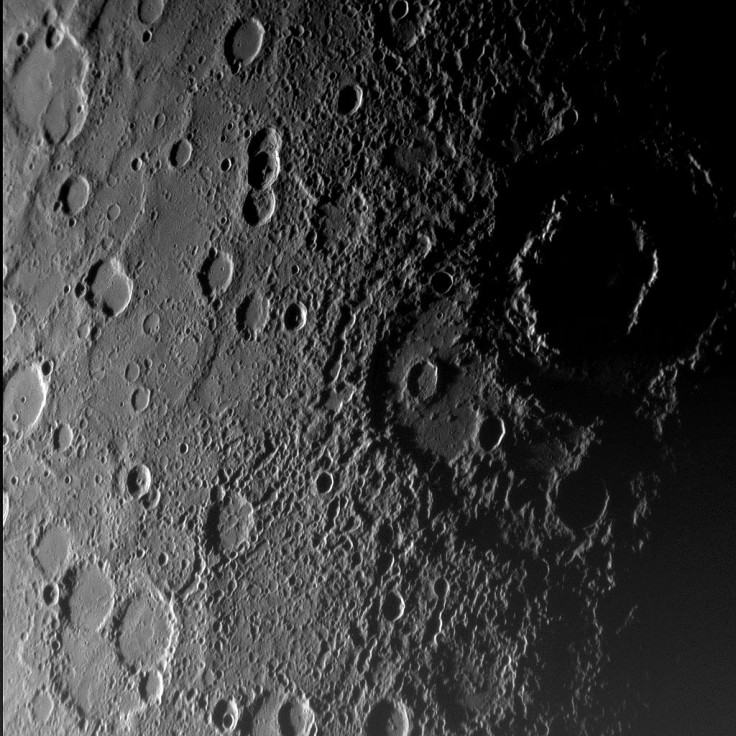NASA Shares Stunning Image Of Mercury Impact Crater That's Bigger Than Texas [PHOTO]

NASA has brought back some of its "greatest hits," including a stunning image of Mercury's Caloris Basin.
On Twitter, NASA shared a color-enhanced image of the crater-riddled surface of Mercury that was taken by the space agency's Mercury Surface, Space Environment, Geochemistry and Ranging (MESSENGER) mission back in November 2014. The photo shows the planet's Caloris Basin, which according to NASA's website, is the most "spectacular" of the many craters created by space debris continuously hitting Mercury, which does not have a thick atmosphere like Earth to protect it.
We are sharing some of our greatest hits! And we’re not talking about musical hits — we’re talking about impact craters! ☄️ Take a journey through the Martian blast patterns, the Death Star-like moon of Saturn and the Mercury basin bigger than Texas: https://t.co/DTjPr70bDU pic.twitter.com/GDbfqJ9jRo
— NASA (@NASA) February 11, 2019
While the Caloris is called a basin by astronomers, this might be a bit misleading as the term is usually applied to craters that are over 186 miles (300 kilometers) wide. However, Mercury's Caloris, which is surrounded by mile-high mountains, is bigger than the state of Texas at about 950 miles (1,525 kilometers) in diameter. To compare, Texas is 773 miles (1,244 kilometers) wide if one travels from east to west.
According to the original caption of the image, lava, which appears orange in the photo, had flooded the Mercury basin. During the Messenger's orbit of Mercury, the spacecraft found that the planet hosts volcanic vents that reach up to 15.5 miles (25 kilometers) in diameter. Scientists believe that they once spewed large volumes of very hot lava that later created valleys and teardrop-shaped ridges in the underlying terrain.
NASA's Messenger was launched back in August 2004 and became the first spacecraft to orbit the planet closest to the Sun in the solar system on March 18, 2011. It carried eight instruments used to study Mercury including the Mercury Dual Imaging System (MDIS), Gamma-Ray and Neutron Spectrometer (GRNS), X-ray Spectrometer (XRS), Mercury Laser Altimeter (MLA), Atmospheric and Surface Composition Spectrometer (MASCS), Energetic Particle and Plasma Spectrometer (EPPS), magnetometer (MAG) and Radio Science (RS).
Messenger ended its orbit on April 30, 2015 with a planned crash into Mercury's surface.
Aside from Mercury's Caloris Basin, NASA also shared images of the Moon's Tycho crater, the dwarf planet Ceres' Occator crater and Venus' largest known impact site, the Mead Crater, among others.
Check out all the images NASA has shared of the most intriguing craters in the solar system here.
© Copyright IBTimes 2024. All rights reserved.





















